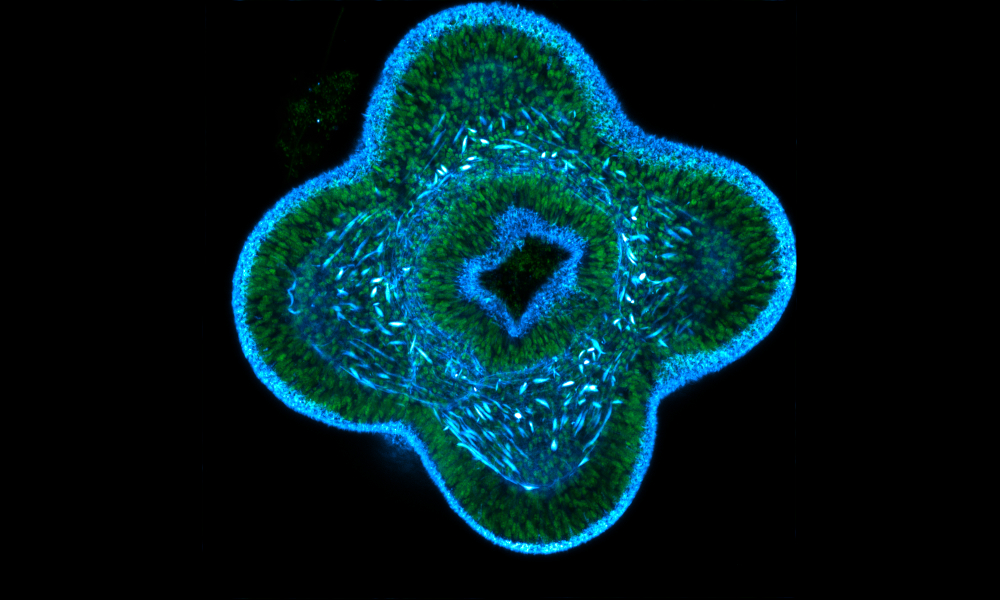
The starlet sea anemone (Nematostella vectensis) is native to the North American East coast. At EMBL Heidelberg it is used as a model organism. The anemone's relatively simple body plan and transparent nature make it suitable for studies using fluorescence microscopy. Biologists use it to study evolution, genomics, reproductive biology, developmental biology and ecology.
The image shown here, taken by Anniek Stokkermans from EMBL's Ikmi Group, shows a larva of Nematostella vectensis. It is in the process of developing the buds that will give rise to its characteristic tentacles. These first four tentacles develop at defined positions when a larva becomes a primary polyp. When the primary polyp receives food, it can acquire additional tentacles, becoming first a juvenile and then an adult polyp. Adult polyps can have up to 16 tentacles. It can lose them in response to stress and regrow the tentacles after amputation.
The blue colour in the image shows staining of a polymer microfilament (F-actin). This way the cytoskeleton and muscle fibers in the tentacle buds become visible. Green colours show the nuclei in the larval cells.
Credit: Anniek Stokkermans/EMBL
Tags: anemone, Ikmi, Nematostella vectensis, Picture of the Week






